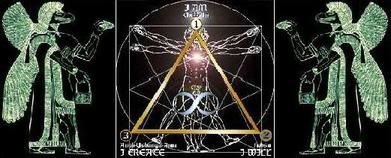Post by SAMURAI36 on Nov 18, 2004 17:00:07 GMT -5
I put this one up on the old CRADLE, and I thought it was some pretty worthwhile info, so I'll add it on again:
In the beginning, Newton discovered that color is light. All of the colors of the spectrum are within sunlight. Every time we see a color, we are seeing colored light. An item may appear to have a colored pigmentation, but what is really happening is that particular pigment has the ability to absorb many colored wavelengths of light.
The arrangement of colors is quite scientific, and the precise order of violet, blue, indigo, green, yellow, orange, and red turns up again and again in nature. Ever-present in a rainbow, beautiful in the spray of a waterfall, or reflected on the walls as the sun shines through a crystal chandelier, is the spectrum. For a designer's or artist's purposes, the spectrum has been bent to create a continuous circle of color that holds inherent color relationships used in all creative and colorful fields of interest including design, physics and psychology.

The basic "map" for color theory is known as the color wheel (at right). Although our world is filled with nearly 10 million discernible hues, the color wheel displays only 12, each representing approximately 1 million colors in that particular family. The most important colors are primary colors, and there are three: red, yellow and blue. These three are special because they are pure. No other colors can be mixed together to create any of the three. They are spaced equidistant from one another on the color wheel, and when mixed together, in varying amounts, they create the remaining nine colors.
The second group of colors on the color wheel, those that are equal parts of two of the primaries are called secondary colors. A mixture of half-red and half-yellow gives us orange and is located right between red and yellow on the color wheel, for example.
The remaining six colors that complete the color wheel are tertiary colors. They are the mixture of one primary and one of its next-door neighbors, a secondary color. For instance, between red and orange, is red-orange. And between orange and yellow is yellow-orange. Notice how the primary colors exert their power and use their name first in every tertiary combination?
(Continued....)
The Science of Color
In the beginning, Newton discovered that color is light. All of the colors of the spectrum are within sunlight. Every time we see a color, we are seeing colored light. An item may appear to have a colored pigmentation, but what is really happening is that particular pigment has the ability to absorb many colored wavelengths of light.
The arrangement of colors is quite scientific, and the precise order of violet, blue, indigo, green, yellow, orange, and red turns up again and again in nature. Ever-present in a rainbow, beautiful in the spray of a waterfall, or reflected on the walls as the sun shines through a crystal chandelier, is the spectrum. For a designer's or artist's purposes, the spectrum has been bent to create a continuous circle of color that holds inherent color relationships used in all creative and colorful fields of interest including design, physics and psychology.

The basic "map" for color theory is known as the color wheel (at right). Although our world is filled with nearly 10 million discernible hues, the color wheel displays only 12, each representing approximately 1 million colors in that particular family. The most important colors are primary colors, and there are three: red, yellow and blue. These three are special because they are pure. No other colors can be mixed together to create any of the three. They are spaced equidistant from one another on the color wheel, and when mixed together, in varying amounts, they create the remaining nine colors.
The second group of colors on the color wheel, those that are equal parts of two of the primaries are called secondary colors. A mixture of half-red and half-yellow gives us orange and is located right between red and yellow on the color wheel, for example.
The remaining six colors that complete the color wheel are tertiary colors. They are the mixture of one primary and one of its next-door neighbors, a secondary color. For instance, between red and orange, is red-orange. And between orange and yellow is yellow-orange. Notice how the primary colors exert their power and use their name first in every tertiary combination?
(Continued....)














